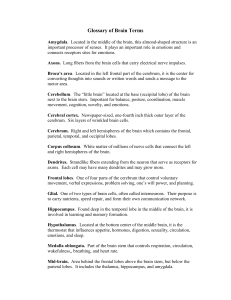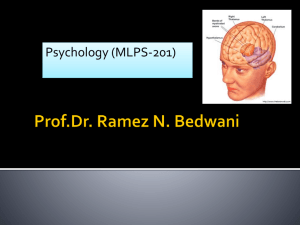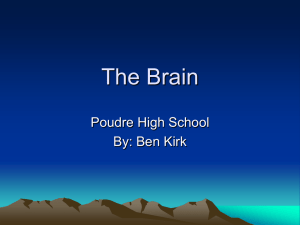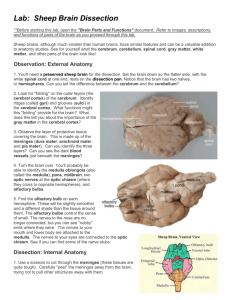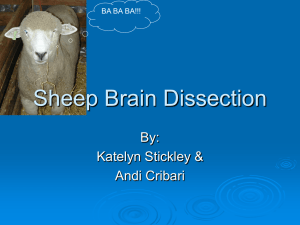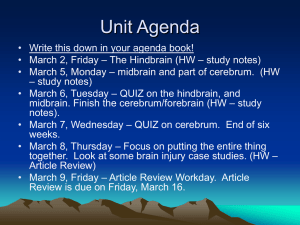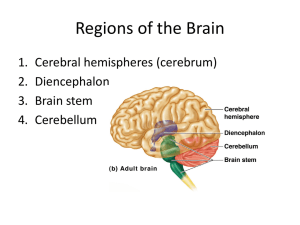Nervous System Part 3
advertisement
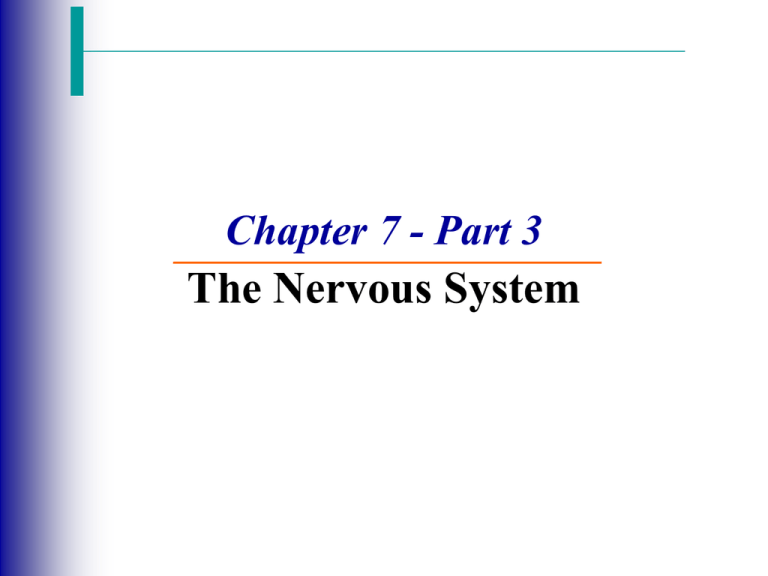
Chapter 7 - Part 3 The Nervous System The Reflex Arc Reflex – Rapid, predictable, and involuntary responses to stimuli Much like a one-way street – once a reflex begins, it always goes in the same direction Reflex arc – Direct route from a sensory neuron, to an interneuron, to an effector The neural pathway where reflexes occur over Simple Reflex Arc Types of Reflexes and Regulation 1. Autonomic Reflexes Regulate the activity of smooth muscles, the heart, and glands. Regulate digestion, elimination, blood pressure, and sweating. Examples: Secretion of saliva and changes in the size of the eye pupils. 2. Somatic Reflexes Include all reflexes that stimulate the skeletal muscles. Examples: When you pull your hand away quickly from a hot object. CNS During embryonic development, the CNS first appears as a simple tube, the neural tube The neural tube becomes the brain and spinal cord The opening of the neural tube enlarges and becomes the ventricles or chambers Four chambers within the brain Filled with cerebrospinal fluid The Brain • It weighs a little over 3 lbs. • It looks wrinkled like a walnut and with the texture of cold oatmeal. • Largest and most complex mass of nervous tissue in the body. Regions of the Brain 1. Cerebral Hemispheres 2. Diencephalon 3. Brain Stem 4. Cerebellum Cerebral Hemispheres (Cerebrum) Paired (left and right) superior parts of the brain Include more than half of the brain mass Encloses and obscures much of the brain stem How a mushroom cap covers the top of the stalk Cerebral Hemispheres (Cerebrum) The surface is made of elevated ridges and shallow grooves: Gyri - Elevated ridges Sulci – Shallow grooves Lobes of the Cerebrum Fissures (deep grooves) divide the cerebrum into lobes Surface lobes of the cerebrum 1. Frontal Lobe 2. Parietal Lobe 3. Occipital Lobe 4. Temporal Lobe Lobes of the Cerebrum Specialized Areas of the Cerebrum Somatic Sensory Area – Receives impulses from the body’s sensory receptors Located in the parietal lobe Allows you to recognize pain, coldness, or a light touch The body is represented in an upside down manner in the sensory area The sensory pathways are crossed – the left side of the cortex receives impulses from the right side of the body Sensory and Motor Areas of the Cerebral Cortex Specialized Areas of the Cerebrum Impulses from the special sense organs are interpreted in other cortical areas. Visual Area Located in the posterior part of the occipital lobe Olfactory Area Located deep inside the temporal lobe Specialized Areas of the Cerebrum Primary Motor Area – Sends impulses to skeletal muscles Allows us to consciously move our skeletal muscles Located in the frontal lobe The body is represented upside-down Pathways are crossed Most of the neurons in this primary motor area control body areas having the finest motor control (face, mouth, hands) Specialized Areas of the Cerebrum Broca’s Area – Involved in our ability to speak Damage to this area causes inability to say words properly (you know what you want to say, but you can’t vocalize the words) Specialized Areas of the Cerebrum Higher Intellectual Reasoning – Believed to be in the anterior part of the frontal lobe Complex Memories – Appear to be stored in the temporal and frontal lobes Language Comprehension (Word Meanings) – Located in the frontal lobes Speech Area – Allows one to sound out words Located at the junction of the temporal, parietal, and occipital lobes Layers of the Cerebrum Gray Matter Outer layer Composed mostly of neuron cell bodies Cerebral Cortex – The outermost gray matter of the cerebrum Layers of the Cerebrum White Matter The remaining, deeper cerebral hemisphere tissue Composed of fiber tracts (bundles of nerve fibers) carrying impulses to or from the cortex Layers of the Cerebrum The corpus callosum (large fiber tract) connects the cerebral hemispheres Allows the cerebral hemi-spheres to communicate with one another Layers of the Cerebrum Although most of the gray matter is in the cerebral cortex, there are several islands of gray matter buried deep within the white matter. Layers of the Cerebrum Basal Nuclei – Internal islands of gray matter Help regulate voluntary motor activities by modifying sent instructions Individuals who have problems with their basal nuclei are often unable to walk normally or carry out other voluntary movements. Examples: Huntington’s disease and Parkinson’s disease
